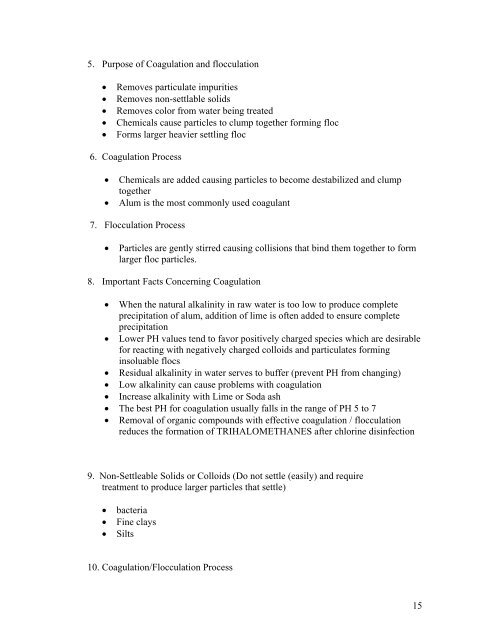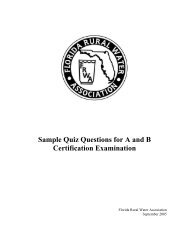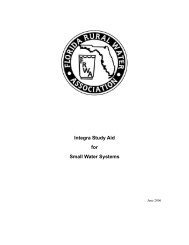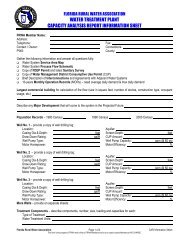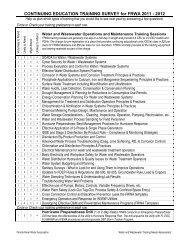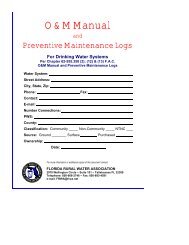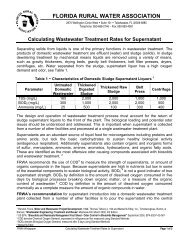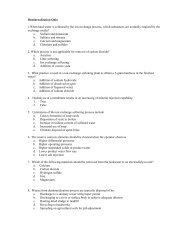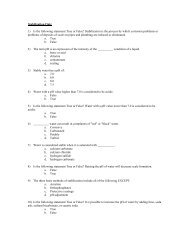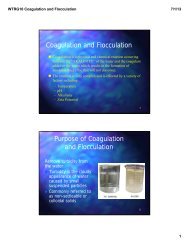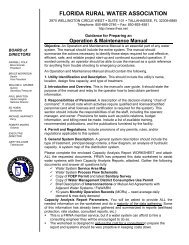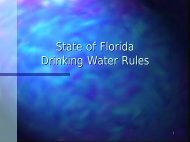The Taylor Tutorial - Florida Rural Water Association
The Taylor Tutorial - Florida Rural Water Association
The Taylor Tutorial - Florida Rural Water Association
You also want an ePaper? Increase the reach of your titles
YUMPU automatically turns print PDFs into web optimized ePapers that Google loves.
5. Purpose of Coagulation and flocculation• Removes particulate impurities• Removes non-settlable solids• Removes color from water being treated• Chemicals cause particles to clump together forming floc• Forms larger heavier settling floc6. Coagulation Process• Chemicals are added causing particles to become destabilized and clumptogether• Alum is the most commonly used coagulant7. Flocculation Process• Particles are gently stirred causing collisions that bind them together to formlarger floc particles.8. Important Facts Concerning Coagulation• When the natural alkalinity in raw water is too low to produce completeprecipitation of alum, addition of lime is often added to ensure completeprecipitation• Lower PH values tend to favor positively charged species which are desirablefor reacting with negatively charged colloids and particulates forminginsoluable flocs• Residual alkalinity in water serves to buffer (prevent PH from changing)• Low alkalinity can cause problems with coagulation• Increase alkalinity with Lime or Soda ash• <strong>The</strong> best PH for coagulation usually falls in the range of PH 5 to 7• Removal of organic compounds with effective coagulation / flocculationreduces the formation of TRIHALOMETHANES after chlorine disinfection9. Non-Settleable Solids or Colloids (Do not settle (easily) and requiretreatment to produce larger particles that settle)• bacteria• Fine clays• Silts10. Coagulation/Flocculation Process15


